Cardigan Castle | Visit Amazing Welsh Castles
Cardigan Castle is located on the banks of the River Teifi in Ceredigion, West Wales. It is known for its Norman origins and association with the first National Eisteddfod in 1176.
Over the centuries, the site has served as a military stronghold, private residence, and cultural venue. Following major restoration, the castle now functions as a visitor attraction with heritage exhibitions, gardens, and accommodation.
Quick Facts
Location: Cardigan, Ceredigion, Wales
Founded: Around 1110
Founded by: Gilbert de Clare, a Norman lord
Historic Use: Military fortification, private residence, civic building
Architectural Type: Norman castle with later Georgian additions
Notable Events: Hosted the first recorded National Eisteddfod in 1176
Current Status: Restored heritage attraction and events venue
Ownership: Operated by Cadwgan Building Preservation Trust
Listing Status: Grade I listed building
Dog Friendly: Dogs allowed in outdoor areas on leads
Brief History
The castke was first built around 1110 by Gilbert de Clare as part of Norman efforts to secure West Wales. The original timber fortification was soon replaced with stone. It passed into Welsh control under Lord Rhys (Rhys ap Gruffydd) in the late 12th century, who rebuilt parts of the castle in stone and hosted the first recorded National Eisteddfod there in 1176.
In the 13th century, the castle changed hands between English and Welsh rulers during periods of conflict. Following Edward I’s conquest of Wales, it became part of the English Crown's network of frontier castles.
During the English Civil War in the 1640s, Parliamentarian forces partially demolished the defences to prevent further military use. In the 18th century, the castle grounds were converted into a private residence known as Castle Green House. The site fell into disrepair during the 20th century.
After years of campaigning, the Cadwgan Building Preservation Trust acquired the castle. A major restoration project, completed in 2015, reopened the castle to the public with exhibitions, accommodation, and restored gardens.
Features and Layout
The castle combines medieval fortifications with later Georgian architecture. Much of the original stone curtain wall remains, outlining the Norman footprint. Surviving sections of the defensive walls and towers are visible from the River Teifi and within the site.
The central feature is Castle Green House, an 1808 Georgian mansion built over the remains of the medieval castle. It houses exhibitions about the castle’s history, Lord Rhys, and the Eisteddfod tradition.
Visitors can explore the landscaped gardens, which include restored 19th-century planting schemes, vegetable beds, and a glasshouse. A section of the outer bailey has been repurposed into event space and accommodation.
The castle walls show signs of previous bombardment and repair. In some areas, staircases are heavily worn, a sign of long use. Interpretation panels mark key medieval structures no longer fully intact.
Did You Know?
A graffiti carving of the name “Mary” was found inside Castle Green House, believed to date back to the 19th century.
Images
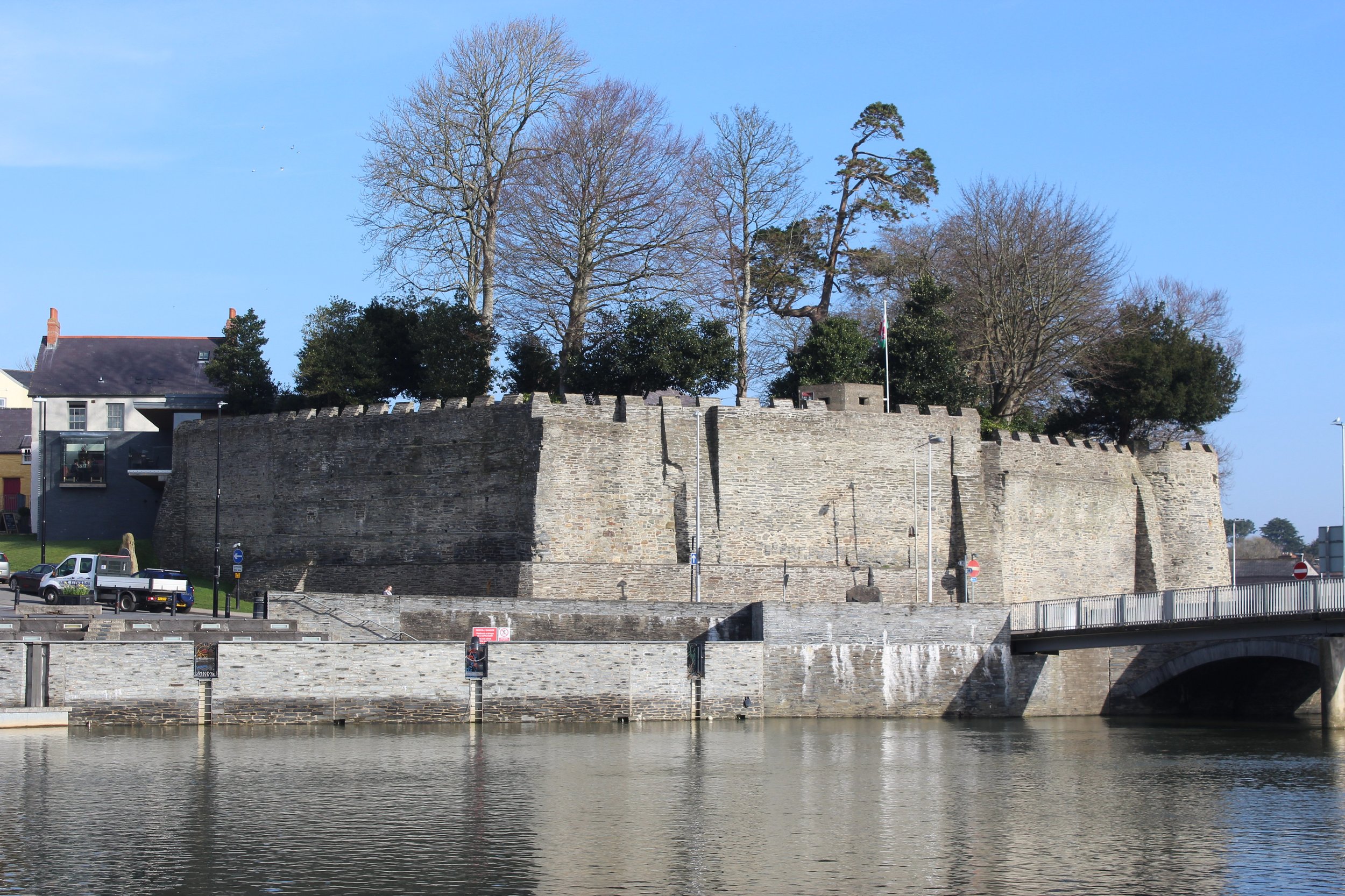
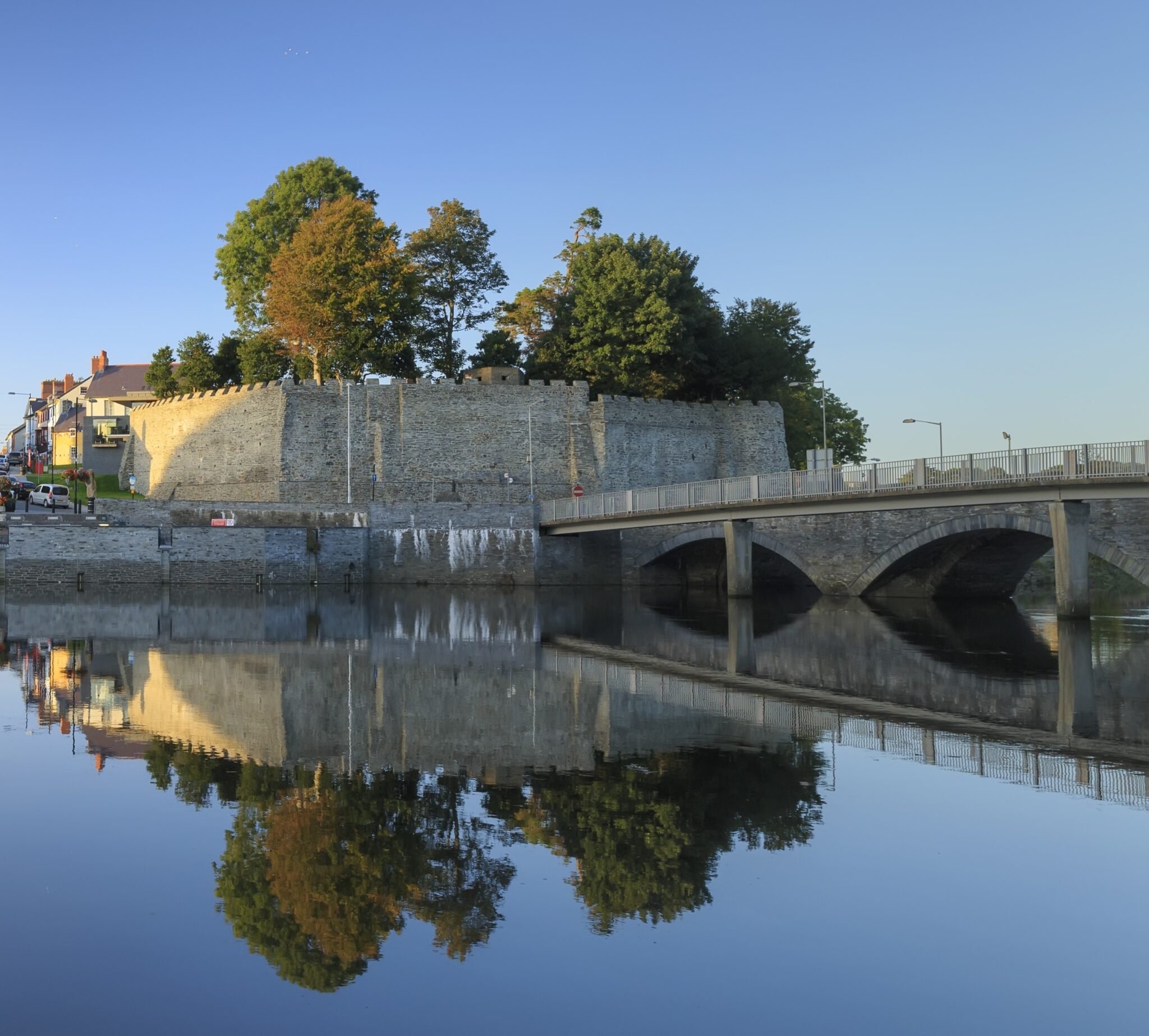
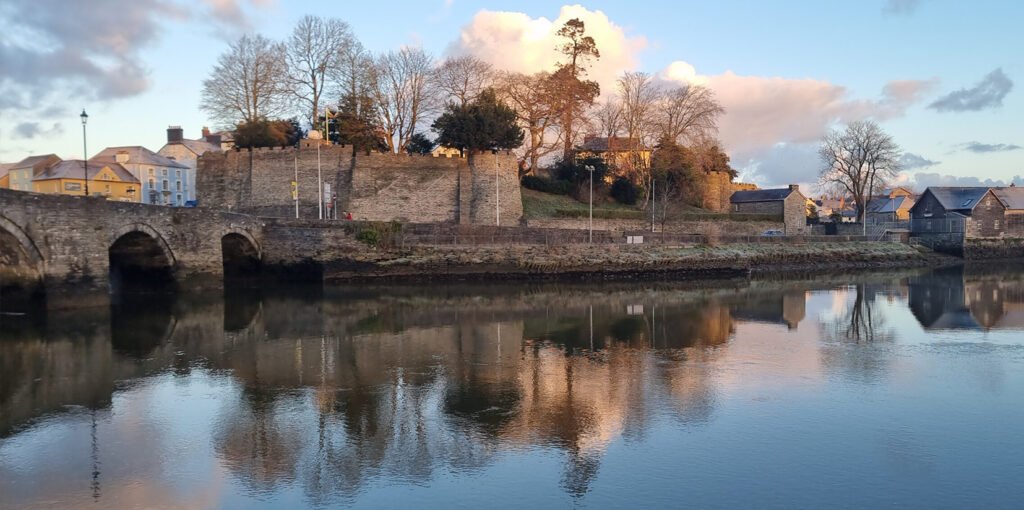
Legends and Stories
One of the best-known stories linked to this castle is the hosting of the first recorded National Eisteddfod in 1176 by Lord Rhys. Chronicles say he invited poets and musicians from across Wales and beyond to a grand cultural festival. This event is considered the foundation of the modern Eisteddfod tradition, although the castle itself makes no grand architectural record of it today.
According to a local guide quoted on TripAdvisor, some visitors report a faint scent of tobacco in Castle Green House, thought to be linked to past residents from the 19th century when the home was privately occupied.
Another tale shared by a volunteer interpreter mentions that during restoration, workers found a sealed room beneath the house containing Victorian-era furniture and belongings untouched for decades. This story has not been independently verified but is frequently mentioned during guided tours.
Visiting
The castle welcomes visitors year-round, with specific opening times and ticket options.
Opening Times
Open daily from 10:00 – 16:00, subject to special events
Restaurant 1176: Opens at 08:30 daily; evening service on Fridays and Saturdays (check site for latest)
Prices
Adult: £8
Child: £5
Family ticket: £22 (includes entry for 2 adults and up to 3 children)
Dogs (on leads): £2 per dog
Tickets are valid for unlimited visits for 12 months.
Directions & Parking
Located at Green Street, Cardigan, SA43 1JA
No dedicated on-site parking for day visitors. The nearest public car park is at the bottom of Quay Street, just a minute’s walk away; additional town centre parking within a 2–4-minute stroll.
Facilities
Accessibility: Wheelchair-friendly paths and a lift in Castle Green House; the 1176 restaurant and some areas are step-free.
Dogs: Permitted in the outdoor grounds on leads (£2); dogs are not allowed inside Castle Green House or during some events.
Amenities: Toilets and baby-changing facilities available in the shop and Castle Green House cardigancastle.com. Free Wi‑Fi across the site .
Guided Tours: Personal and group tours are available, along with self-guided options and interactive displays; booking ahead is recommended.
Nearby Attractions
Teifi Marshes Nature Reserve
Located just across the river, this large wetland reserve includes accessible trails, bird hides, and educational displays. Managed by the Wildlife Trust of South and West Wales, it is ideal for families and nature watchers.
Cardigan Guildhall Market
Housed in a 19th-century building with Gothic features, this indoor market offers a variety of independent stalls and is within a 5-minute walk of the castle.
Mwldan Theatre and Cinema
A modern arts centre offering film screenings, live music, and theatre performances, also located nearby in Cardigan town centre.
Visitor Tips
Book your ticket online to benefit from 12-month unlimited re-entry
Arrive early (from 10:00) for quieter access to exhibits and gardens
Dogs on leads are welcome in the grounds for a £2 fee; not allowed indoors
Wear suitable footwear – some paths are uneven or sloped
The 1176 restaurant opens from 08:30 and gets busy at lunchtime
The nearest car park is Quay Street, less than 2 minutes on foot
FAQs
-
Yes. The site includes wheelchair-accessible paths, a lift in Castle Green House, and step-free entry to the 1176 restaurant. Some uneven ground remains in the garden area.
-
Yes. Dogs are permitted in the outdoor areas if kept on a lead. There is a £2 entry fee per dog. Dogs are not allowed inside Castle Green House or during some events.
-
Yes. Tickets are valid for 12 months from the date of purchase and allow unlimited re-entry within that period.
-
No on-site parking is available for day visitors. The closest car park is on Quay Street, a short walk away. Other public car parks are within 2–4 minutes of the castle.
Wrapping it Up
This castle is a rare example of a Norman fortification that evolved into a Georgian residence and modern cultural venue. It played a key role in Welsh history through the hosting of the first recorded National Eisteddfod in 1176. Visitors can explore medieval walls, formal gardens, and exhibitions in Castle Green House. The castle is accessible, dog-friendly, and centrally located in Cardigan, making it an ideal stop for both heritage tourism and local interest.
Sources
Cardigan Castle Official Website
Provided ticket pricing, opening hours, dog policy, accessibility details, and visitor facilities.
https://cardigancastle.com/Visit Wales
Gave an overview of the castle's cultural significance and listed it as a key heritage attraction in West Wales.
https://www.visitwales.com/attraction/castle/cardigan-castle-gardens-1409795Parks & Gardens UK
Confirmed historical development of the Georgian house and supported coordinate accuracy.
https://www.parksandgardens.org/places/cardigan-castleMwldan Theatre
Confirmed walking-distance cultural venue near the castle.
https://www.mwldan.co.uk/Discover Ceredigion
Supplied details on Guildhall Market and Cardigan town attractions.
https://www.discoverceredigion.wales/
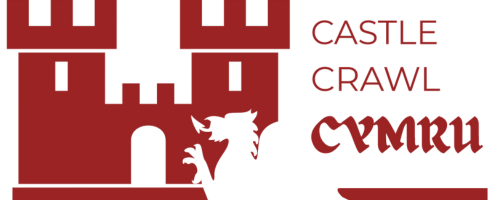

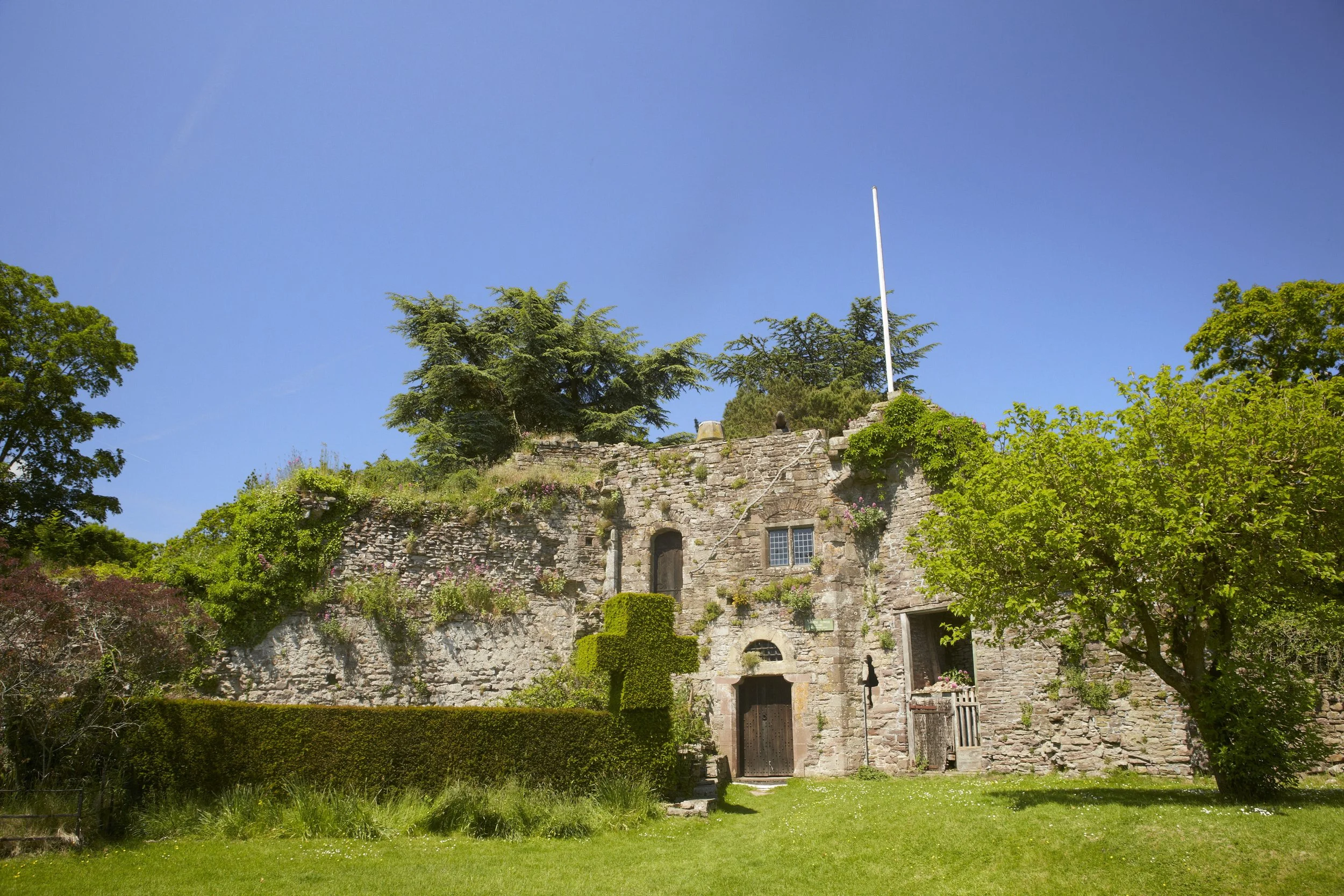
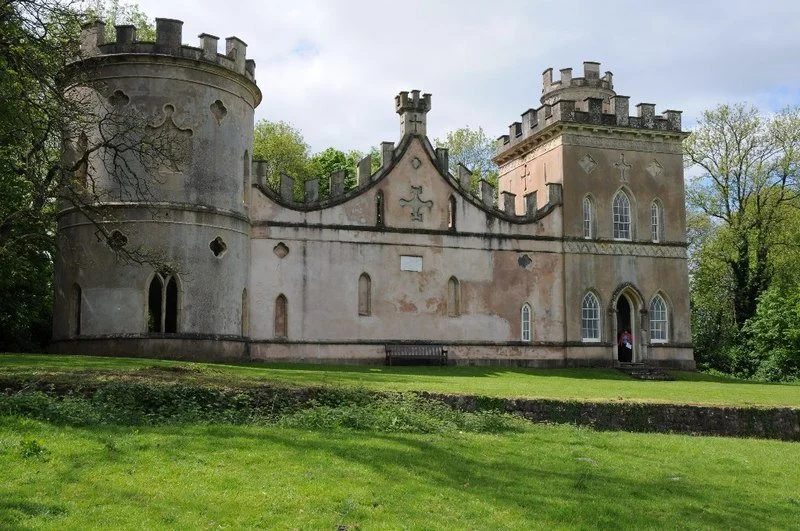
Cardiff Castle is a medieval and Victorian-era site in the centre of Cardiff, the capital of Wales.